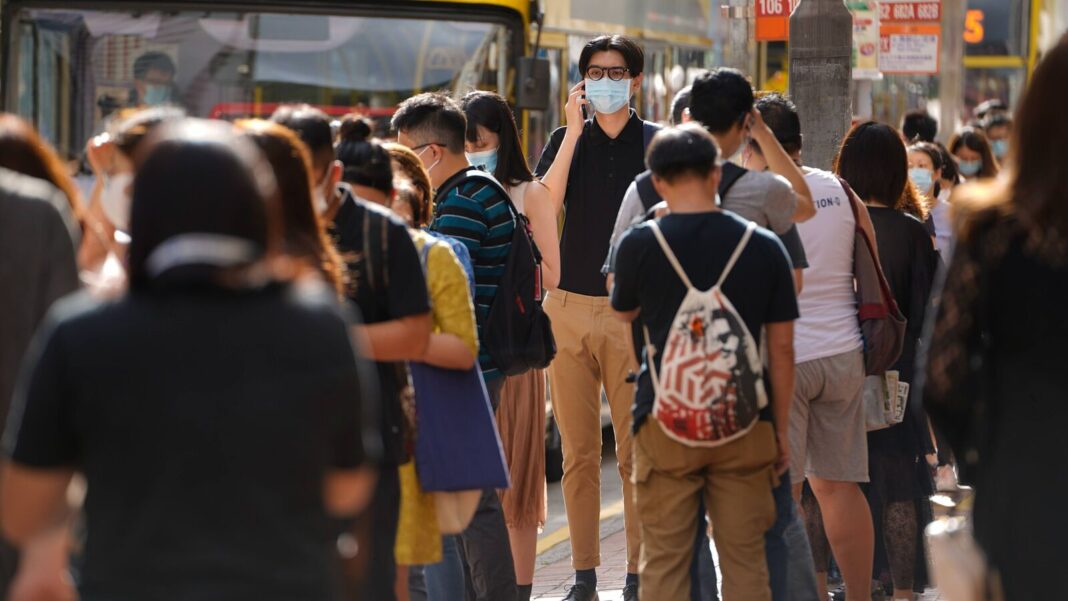Memories of the Covid-19 pandemic have resurfaced as a mysterious respiratory illness among children emerged in China, the epicenter of the earlier outbreak. Hospitals in many Chinese cities have been operating at maximum capacity the past two months, taking in more than 9,000 patients a day. The alarming scenes from China have put health authorities worldwide on high alert.
This Mint Explainer aims to delve into the causes of this mysterious illness, how it differs from Covid-19, and how health bodies worldwide are preparing to address similar situations. What caused the outbreak? The global spotlight turned to the outbreak on November 13 when China’s National Health Commission held a press conference, revealing a notable increase in respiratory illnesses. Subsequently, the Program for Monitoring Emerging Diseases, a global surveillance system for infectious disease outbreaks, reported cases of undiagnosed pneumonia primarily affecting children in northern China.
Chinese health authorities have attributed the significant increase in respiratory infections to the winter. According to Chinese health officials, there has been a rise in children getting hospitalised since May, particularly in northern cities such as Beijing. These were primarily attributed to known pathogens such as influenza, mycoplasma pneumonia, respiratory syncytial virus, and SARS-CoV-2—the virus responsible for Covid-19.
How is mycoplasma pneumonia different from Covid-19? Mycoplasma pneumonia is a key player in the current outbreak. In the respiratory realm, Covid-19 and Mycoplasma pneumonia present distinct challenges. Mycoplasma, a subtle bacterium, causes ‘walking pneumonia’, often mild but surging among children as strict Covid lockdowns resulted in lower antibody levels.
It leads to atypical pneumonia, allowing patients to remain active while infected. In contrast, Covid-19 reveals a complex profile with a prolonged impact on lungs, evidenced by its unique imaging patterns and extended hospital stays. Understanding their temporal disparities—Covid’s prolonged symptoms versus Mycoplasma’s quicker resolution—highlights the intricate interplay between these respiratory adversaries, urging a nuanced approach to diagnosis, treatment, and public health strategies.
That said, mycoplasma pneumonia can lead to more severe lung infections requiring hospitalisation. How has India, and the world, responded? The World Health Organization took swift action in response to the outbreak in China. On 23 November, WHO sought detailed information from Chinese authorities regarding the increase in respiratory illnesses and clusters of pneumonia in children.
The swift communication between Chinese health authorities and the WHO is noteworthy, especially considering the accusations during the Covid-19 outbreak. Chinese authorities were previously accused of covering up the outbreak and criticised for a lack of transparency in providing accurate information to the world. The Indian government has also responded proactively, instructing states and Union Territories to review hospital preparedness.
The health ministry closely monitored the rise in respiratory illness cases among children in China, emphasising the importance of staying vigilant against global health threats. In the United States, a small group of Republican senators urged President Joe Biden to consider a travel ban from China as a precautionary measure against the outbreak. Taiwan’s health ministry urged the elderly, very young and those with poor immunity to avoid travel to China.
What do experts have to say? Experts unanimously agree that the recent surge in respiratory illnesses in China, particularly mycoplasma pneumonia, does not warrant global alarm. Maria Van Kerkhove, the Covid-19 technical lead at WHO, has said that mycoplasma pneumonia is not a reportable disease to the organisation. She noted that while cases had been on the rise the past few months, there is now a decline in reported cases.
Kaushal Kumar Verma, dean of academics at the All India Institute of Medical Sciences, has said that India needs to remain vigilant against global health threats, in light of the respiratory illness outbreak in China. But he has assured that India is well-prepared. Moreover, experts emphasise that although some cases of mycoplasma pneumonia may lead to serious complications, the majority of individuals recover without the need for antibiotics.
This assertion aligns with the understanding that mycoplasma pneumonia is generally manageable, and the global community need not be overly worried about its impact, as there is no evidence linking it to a new or novel virus. The situation appears to be a localised concern with reassuring signs of a decline in reported cases. It’s also to be noted here that the occurrence of mycoplasma pneumonia is not limited to China.
There is an increase in respiratory infections worldwide, with outbreaks observed in various locations, including in Ohio and Massachusetts in the US, as well as in Denmark. .
From: livemint
URL: https://www.livemint.com/science/health/mint-explainer-should-india-be-worried-about-china-s-walking-pneumonia-11701840261322.html



